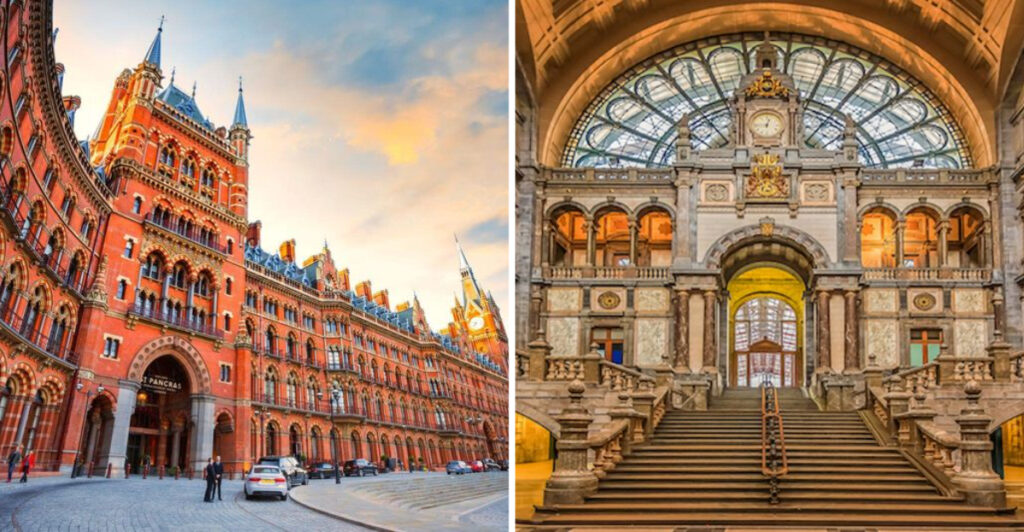Exploring Europe by train offers a glimpse into the continent’s rich history and architectural grandeur. From the palatial to the modest, each station tells its own story, reflecting the culture and era it was built in. Here are 17 train stations that are truly awe-inspiring, along with 7 that might not be worth the detour.
St. Pancras International, London
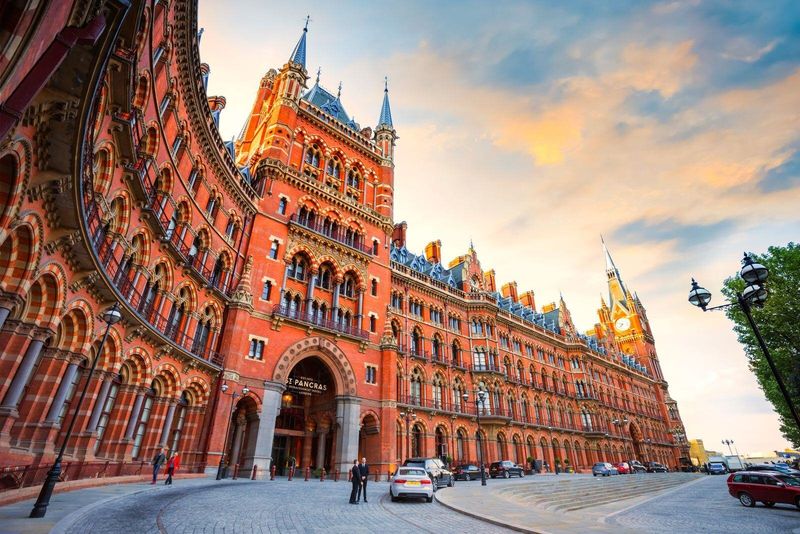
St. Pancras International stands as a masterpiece of Victorian Gothic Revival architecture. With its towering spires and intricate ironwork, it resembles a fairytale castle. Travelers are often captivated by its grand entrance and the magnificent clock tower, a beacon for those arriving in London.
Inside, the blend of old and new creates a unique atmosphere, where history meets contemporary art and culture. This station is not just a transport hub; it’s a destination in itself. Visitors can enjoy shopping, dining, and even a poetry library.
A fun fact: It narrowly escaped demolition in the 1960s, thanks to a passionate public campaign.
Antwerp Central Station, Belgium
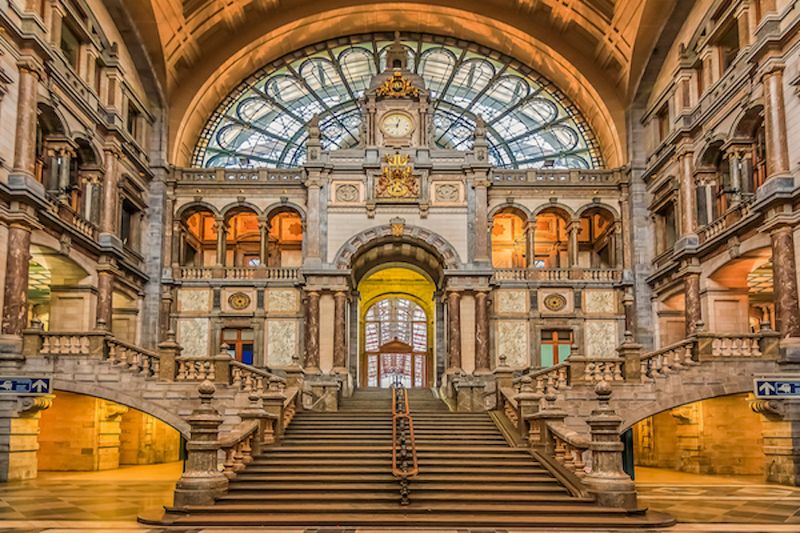
Antwerp Central Station, often dubbed the ‘Railway Cathedral,’ showcases an impressive neo-Baroque design. Its interior boasts a majestic hall adorned with marble pillars and a vast dome that leaves visitors in awe.
The station’s grandeur is matched by its functionality, seamlessly connecting travelers across Europe. Its architectural beauty and meticulous restoration make it a must-visit for architecture enthusiasts.
Did you know? This station underwent a major refurbishment in 2009, preserving its historic charm while enhancing modern amenities. It’s considered one of the most beautiful train stations in the world.
Gare de Lyon, Paris
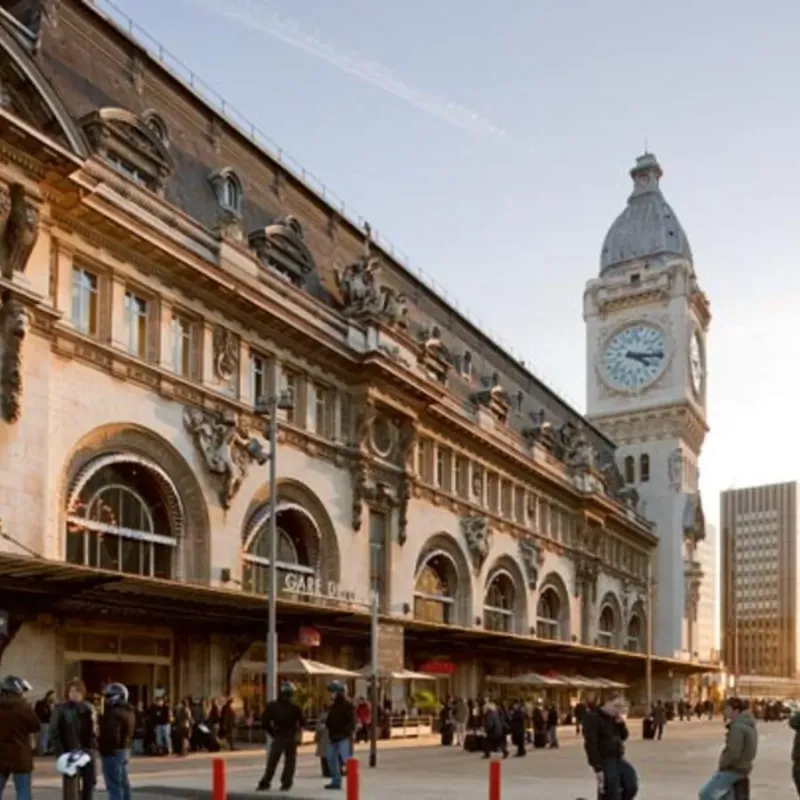
Gare de Lyon in Paris is renowned for its iconic clock tower and Belle Époque architecture. This station exudes elegance and history, welcoming travelers with its ornate façade and bustling platforms.
Inside, the charm continues with the famed Le Train Bleu restaurant, where diners can enjoy gourmet meals in a lavish setting. The station is a perfect blend of historical grandeur and practical functionality.
A fascinating tidbit: It serves as a gateway to the French Riviera, whisking passengers away to sun-drenched coasts and luxurious retreats.
Hauptbahnhof, Berlin
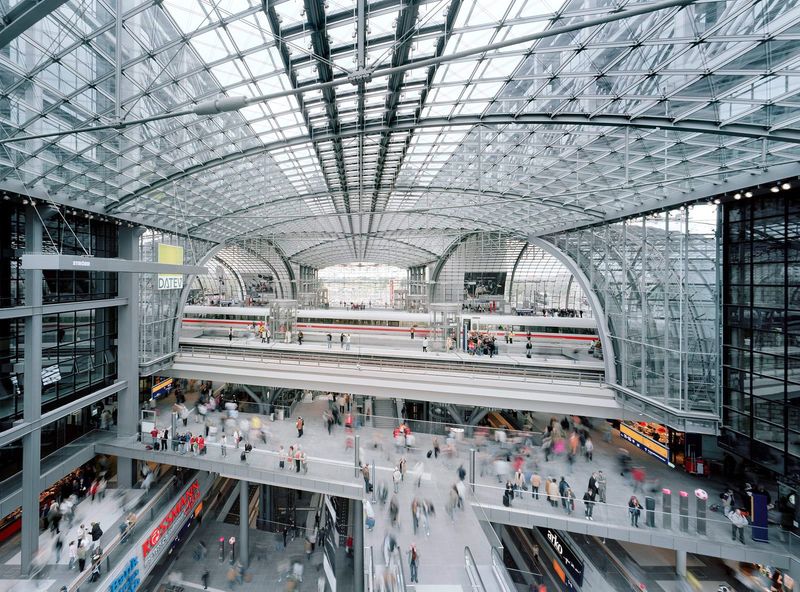
Berlin Hauptbahnhof is a marvel of modern engineering, boasting a striking glass façade and innovative design. Its multi-level platforms efficiently handle the flow of passengers, embodying German precision.
The station’s openness and light-filled spaces create a welcoming atmosphere, contrasting the bustling urban environment outside. Travelers can find a plethora of shops and eateries, making it a convenient stop on their journey.
Fun fact: As Europe’s largest train station, it has more than 80 stores and restaurants, offering something for everyone.
Milano Centrale, Italy
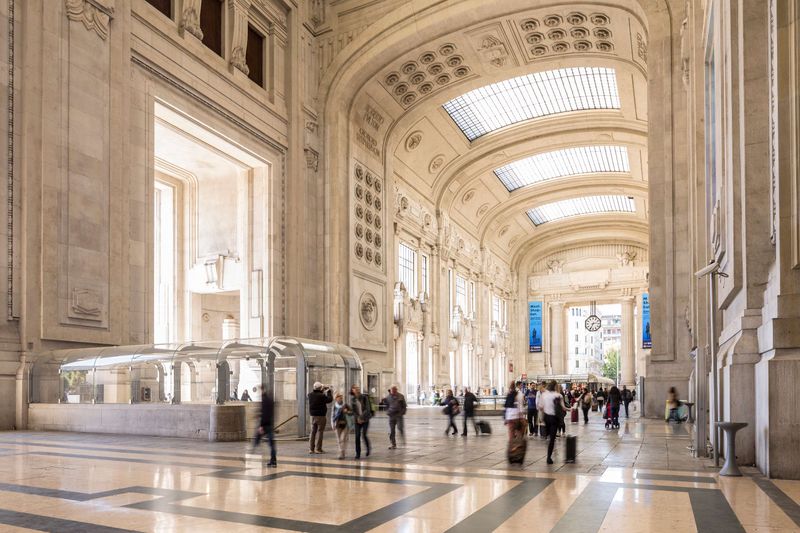
Milano Centrale is a stunning example of Art Deco architecture, characterized by its grand hall and marble floors. The station’s majestic design reflects Italy’s rich cultural heritage.
Visitors are often struck by the sheer scale and beauty of the interior, which seamlessly integrates art and travel. As a major hub, it connects travelers to various parts of Europe, making it a vital part of Italy’s transport network.
Did you know? The station was completed in 1931 and features artwork that celebrates Italian craftsmanship and innovation.
Estação de São Bento, Porto
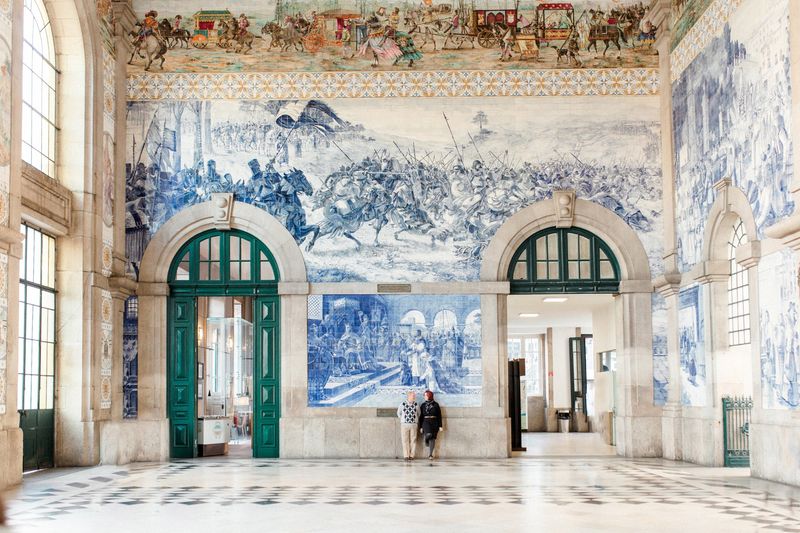
Estação de São Bento in Porto is a visual feast, renowned for its iconic azulejo tile murals. These intricate tiles depict historical scenes, capturing Portugal’s rich past in vibrant blue and white.
The station’s modest exterior belies the artistic wonder within, making it a surprise for first-time visitors. Its central location makes it a convenient gateway to explore Porto’s charming streets.
A fun fact: The station building was once a Benedictine monastery, adding another layer to its historical significance.
Helsinki Central Station, Finland
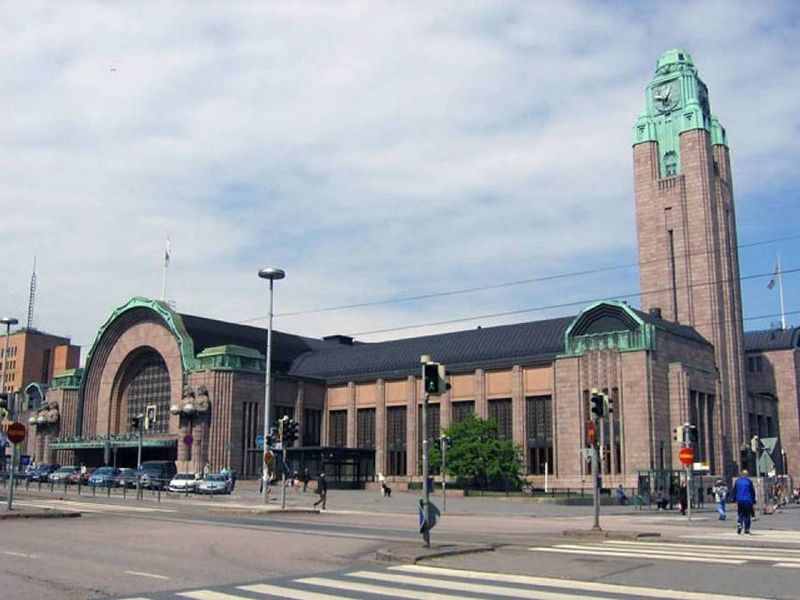
Helsinki Central Station is a hallmark of Art Nouveau architecture, featuring a distinctive granite façade and an impressive clock tower. Its design is quintessentially Finnish, blending functionality with artistic flair.
The station serves as a key hub in Finland’s rail network, efficiently connecting travelers across the country. Inside, the spacious halls and elegant details provide a calming environment amidst the travel rush.
Did you know? The station’s iconic statues, known as the “Lantern Carriers,” have become symbols of Helsinki.
Atocha Station, Madrid
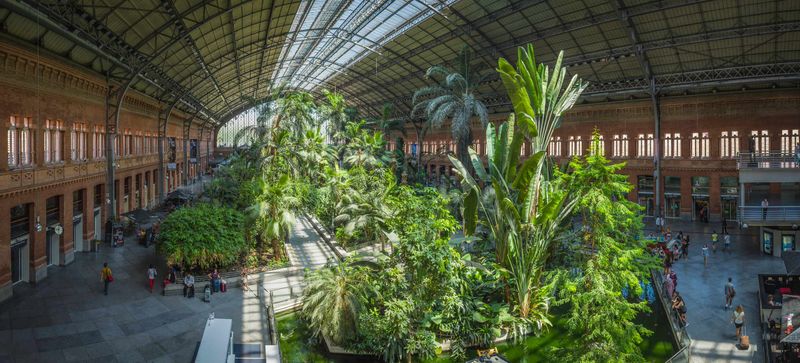
Atocha Station in Madrid is a unique blend of historical architecture and modern design, famous for its lush tropical garden. Travelers can enjoy a moment of tranquility amidst the greenery, a stark contrast to the urban hustle outside.
The station’s historical section, with its striking roof and arches, adds a touch of grandeur, while the modern area offers cutting-edge facilities. It’s a hub of activity, seamlessly connecting various parts of Spain.
Fun fact: The tropical garden houses more than 7,000 plants and even a pond with turtles.
Zürich Hauptbahnhof, Switzerland
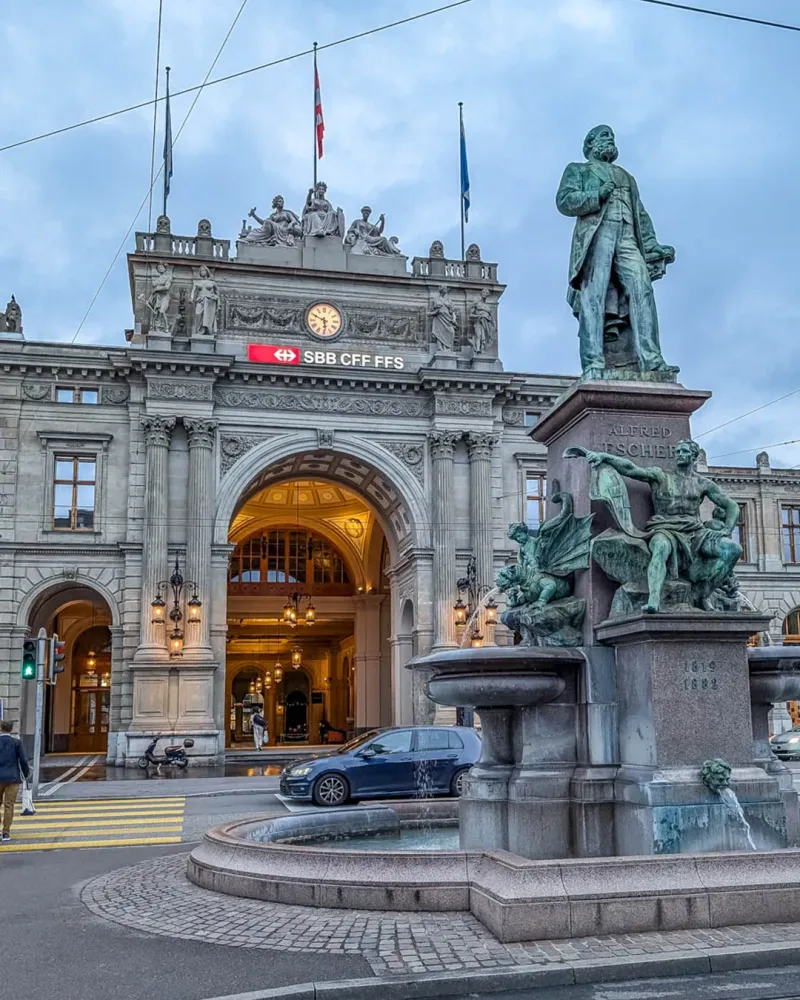
Zürich Hauptbahnhof is a symbol of Swiss efficiency and design, featuring a grand concourse and a prominent clock tower. Its central location makes it a bustling hub for travelers exploring Switzerland and beyond.
The station’s architecture blends traditional elements with modern conveniences, offering a seamless travel experience. Inside, a variety of shops and dining options cater to diverse tastes and needs.
Did you know? It’s one of the busiest railway stations in the world, with over 2,900 trains passing through daily.
Gare du Nord, Paris
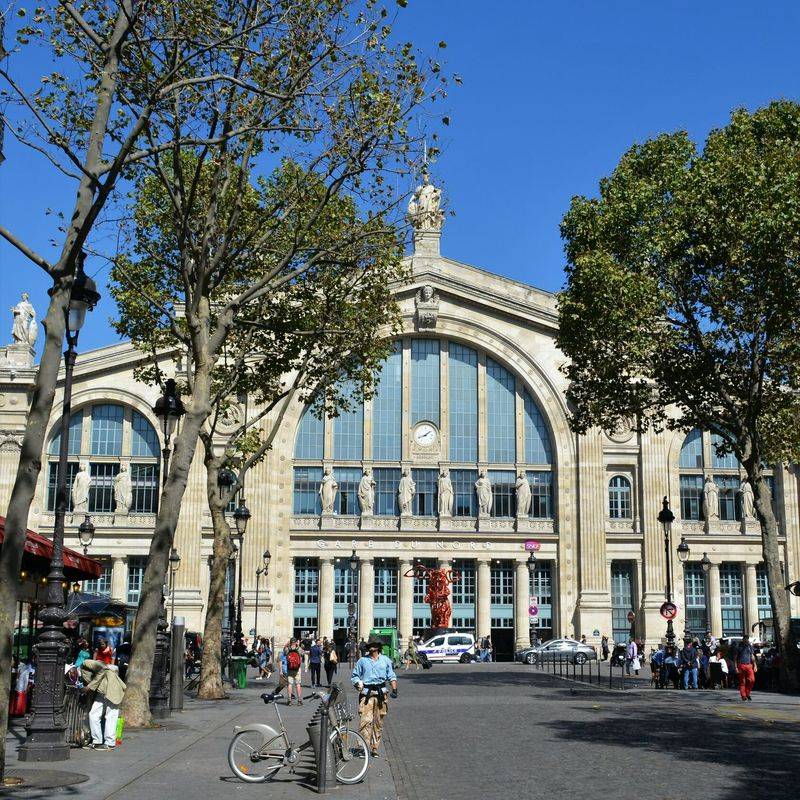
Gare du Nord in Paris is one of the busiest stations in Europe, known for its historic architecture and lively atmosphere. The elegant façade welcomes travelers to the heart of the French capital.
Inside, the station is a hub of activity, connecting passengers to various destinations. Its blend of old-world charm and modern amenities ensures a pleasant travel experience.
A fascinating detail: The station has appeared in numerous films, including “The Bourne Identity.”
Hauptbahnhof, Vienna
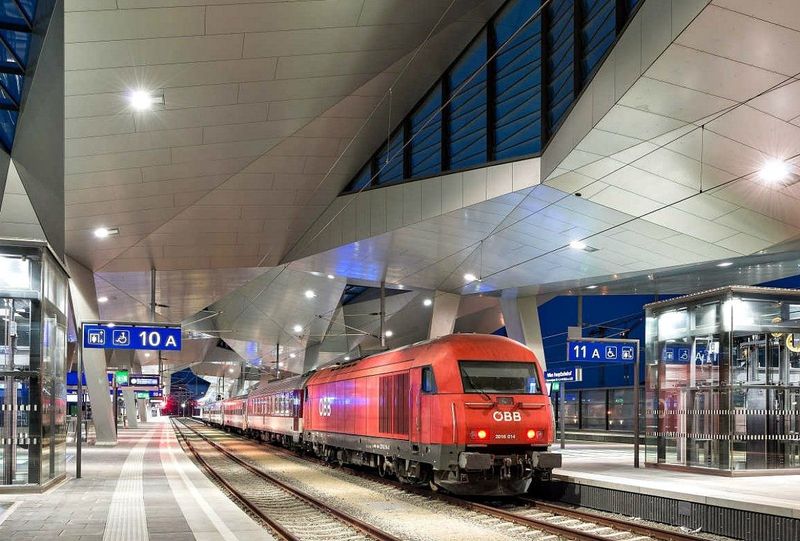
Vienna Hauptbahnhof is a modern marvel, boasting sleek glass architecture and an efficient layout. It serves as a crucial hub in Austria’s rail network, facilitating seamless travel across Europe.
The station’s design emphasizes functionality while incorporating aesthetic elements that reflect Austrian sensibilities. Inside, travelers can find a range of shops and services to enhance their journey.
Did you know? The station’s construction was part of a major urban development project, transforming the surrounding area into a vibrant district.
Gare de Strasbourg, France
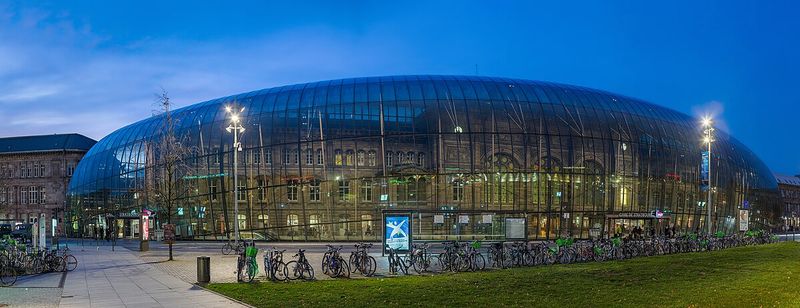
Gare de Strasbourg beautifully marries historical charm with modern design, featuring a striking glass façade that encloses the original structure. This blend of old and new creates a unique travel experience.
Inside, the station retains its historical elegance with ornate detailing, providing a warm welcome to travelers. Its strategic location connects France to neighboring Germany, making it a key transit point.
Fun fact: The glass shell was added in 2007, preserving the original station while enhancing its functionality.
Amsterdam Centraal, Netherlands
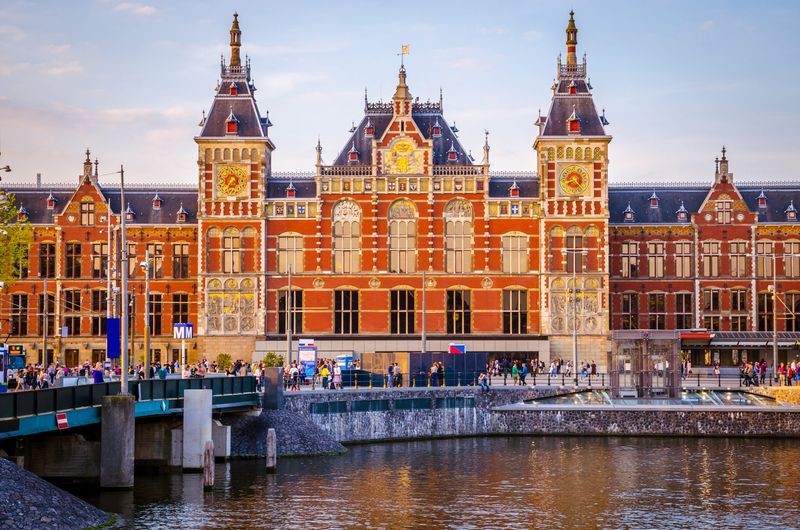
Amsterdam Centraal is a gateway to the Netherlands, known for its Gothic Revival architecture and strategic location by the city’s canals. Its ornate façade and intricate detailing capture the essence of Dutch design.
Inside, the station is a vibrant hub, connecting travelers to various destinations across Europe. The blend of historical elements with modern amenities ensures a comfortable journey.
A quirky fact: The station was built on three artificial islands, supported by over 8,000 wooden piles.
Madrid Chamartín, Spain
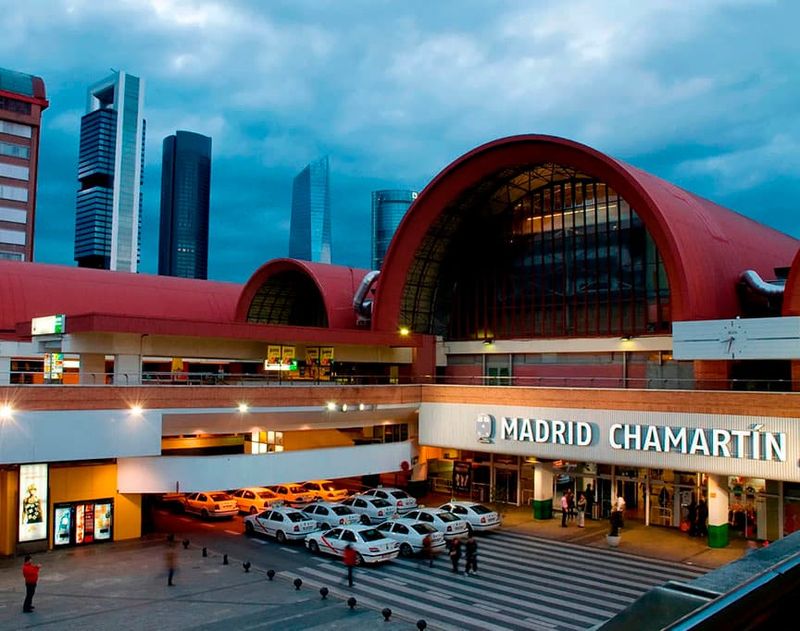
Madrid Chamartín is often overshadowed by Atocha, yet it remains a crucial part of Spain’s rail network. Its modern design and efficient layout cater to the needs of countless travelers.
The station’s architecture reflects contemporary Spanish style, with spacious platforms and a welcoming ambiance. It’s a gateway to northern Spain, offering connections to various regions.
Did you know? Chamartín is home to a popular jazz festival, adding a cultural dimension to this transport hub.
Oslo Central Station, Norway
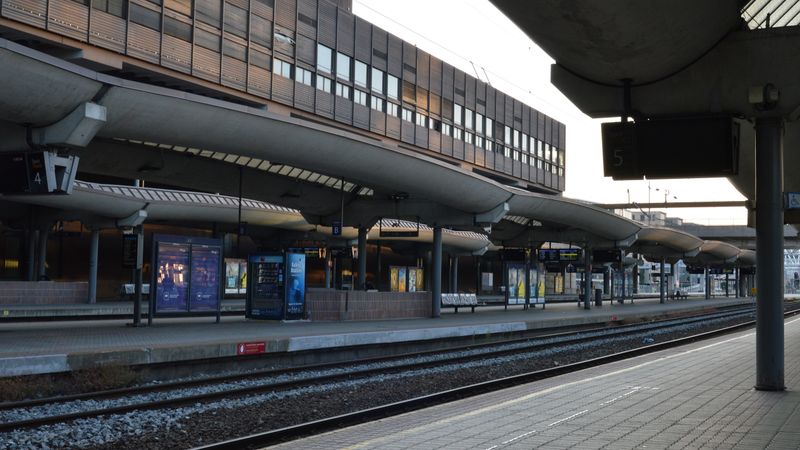
As Norway’s largest train station, Oslo Central Station is a hub of efficiency and modern design. The architecture blends Scandinavian simplicity with functionality, creating a welcoming environment for travelers.
Inside, the spacious layout and contemporary amenities cater to the needs of passengers, ensuring a smooth travel experience. It’s a vital link in Norway’s rail network, connecting various parts of the country.
A fun fact: The station is built on the site of the original Oslo East Station, which dates back to 1854.
Napoli Centrale, Italy
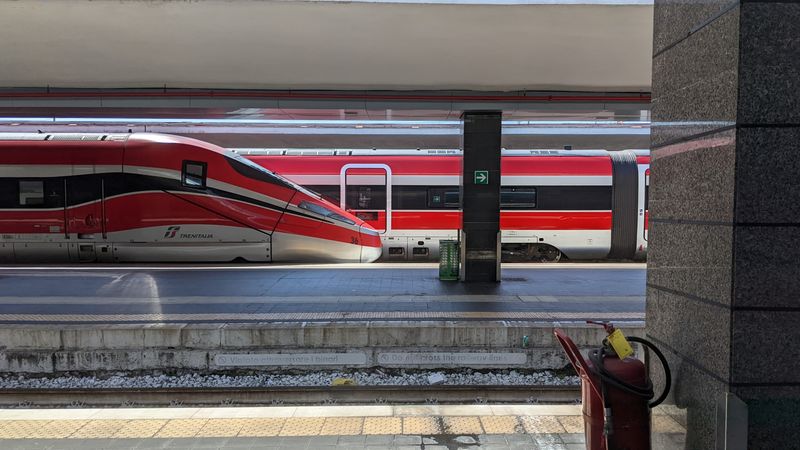
Napoli Centrale is a key transport hub in Italy, reflecting the vibrant energy of Naples. The station’s modern design and efficient layout cater to the needs of countless travelers.
Inside, the bustling atmosphere mirrors the city’s lively spirit, offering a range of shops and eateries. It’s the gateway to the Amalfi Coast, providing easy access to one of Italy’s most picturesque regions.
Did you know? The station is located near the historic center of Naples, a UNESCO World Heritage site.
Gare de Nice-Ville, France
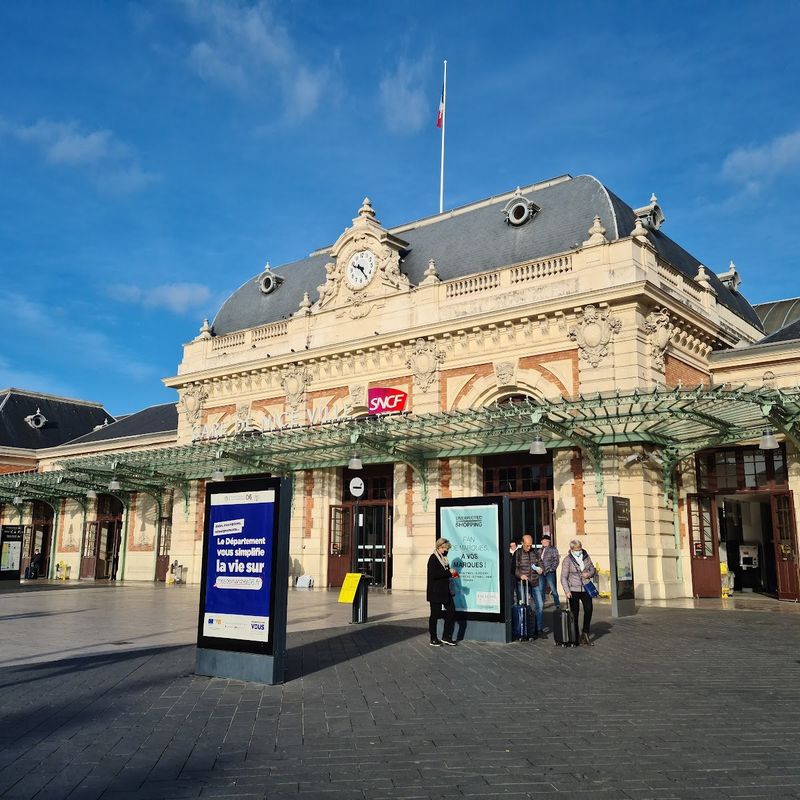
Gare de Nice-Ville serves as the gateway to the French Riviera, captivating travelers with its historic architecture and lively vibes. The station exudes charm, with its elegant façade and ornate detailing.
Inside, the warm ambiance and bustling platforms create a welcoming atmosphere, reflecting the region’s sunny disposition. It’s a key hub for those exploring the Mediterranean coast.
A quirky fact: The station’s roof was designed by Gustave Eiffel, the architect behind the iconic Eiffel Tower.
Warszawa Centralna, Poland
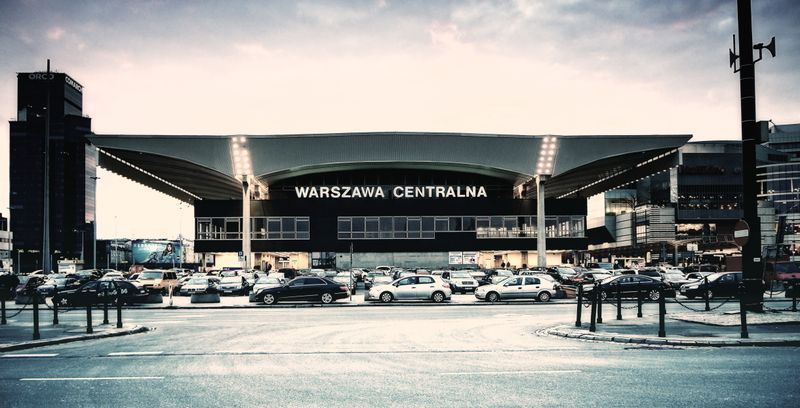
Warszawa Centralna is a symbol of Poland’s resilience, showcasing modernist architecture and Polish design. The station’s sleek lines and functional layout cater to the needs of travelers.
Inside, the vibrant atmosphere and contemporary amenities ensure a pleasant travel experience. It’s a key hub in Poland’s rail network, connecting various parts of the country.
Did you know? The station was a gift from the Soviet Union, built in the 1970s as a testament to modern engineering.
Brussels Central Station, Belgium
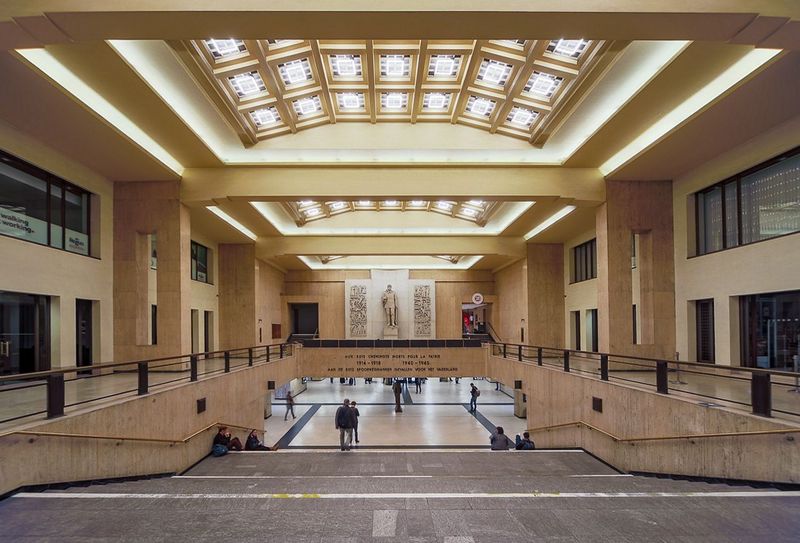
Brussels Central Station is a gem of Art Deco architecture, featuring elegant lines and intricate detailing. The station’s design reflects Belgian craftsmanship, offering a glimpse into the country’s rich heritage.
Inside, the bustling hub connects travelers to various destinations, with modern amenities ensuring a comfortable journey. Its central location makes it a convenient point for exploring Brussels.
A fun tidbit: The station was designed by Victor Horta, a pioneering figure in Belgian architecture.
Gare Saint-Lazare, Paris
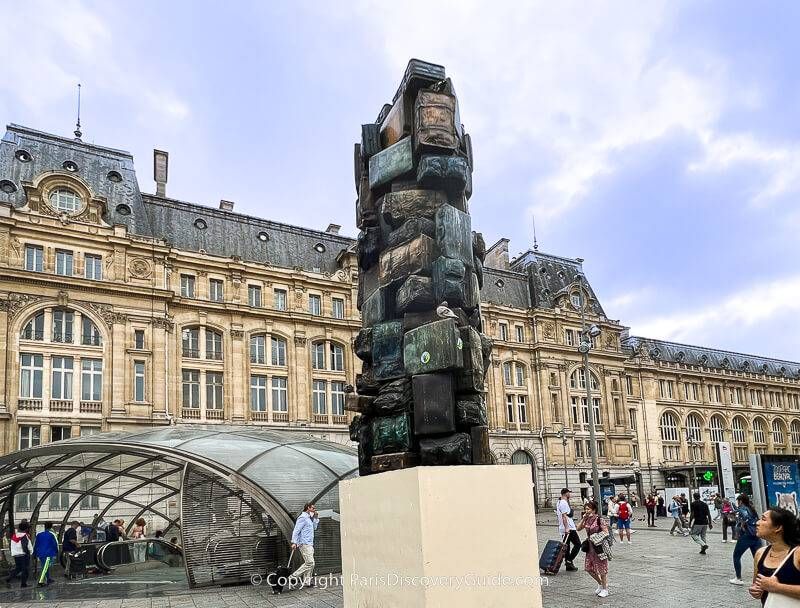
Gare Saint-Lazare is steeped in history, known for its elegant architecture and bustling atmosphere. The station’s ornate façade welcomes travelers, offering a glimpse into Paris’s rich past.
Inside, the lively environment reflects the city’s vibrant spirit, with a range of amenities catering to diverse needs. It’s a key hub for those exploring the Parisian landscape.
Did you know? The station has inspired numerous artists, including Claude Monet, who painted its bustling platforms.
Roma Termini, Italy
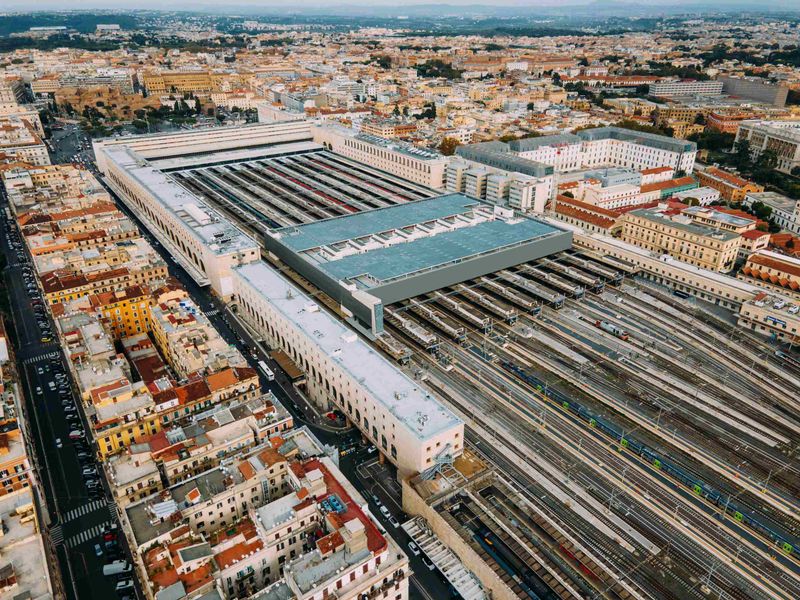
Roma Termini is Italy’s largest train station, embodying modern design and Italian flair. The station’s efficient layout and contemporary amenities cater to the needs of millions of travelers.
Inside, the bustling hub offers a range of shops and services, reflecting Rome’s cosmopolitan character. It’s a vital link in Italy’s rail network, connecting various parts of the country.
A quirky detail: The station houses a museum dedicated to railroad history, enhancing its cultural appeal.
Skip: Brussels Midi/Zuid, Belgium
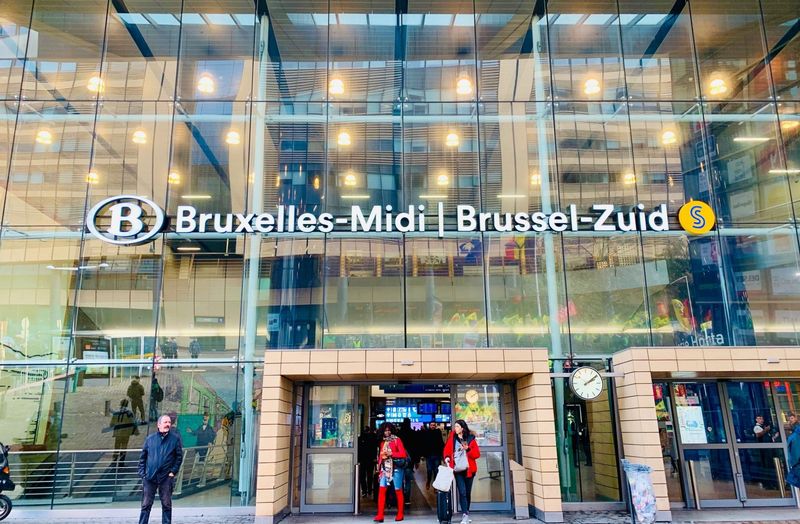
Brussels Midi/Zuid may not capture the imagination with its utilitarian design. The station primarily serves as a transit point, with busy platforms and functional amenities.
Travelers often find it more convenient than inspiring, as it efficiently connects various high-speed rail networks.
While it lacks the architectural allure of other stations, it remains a vital cog in Belgium’s transport system.
Skip: Frankfurt Hauptbahnhof, Germany
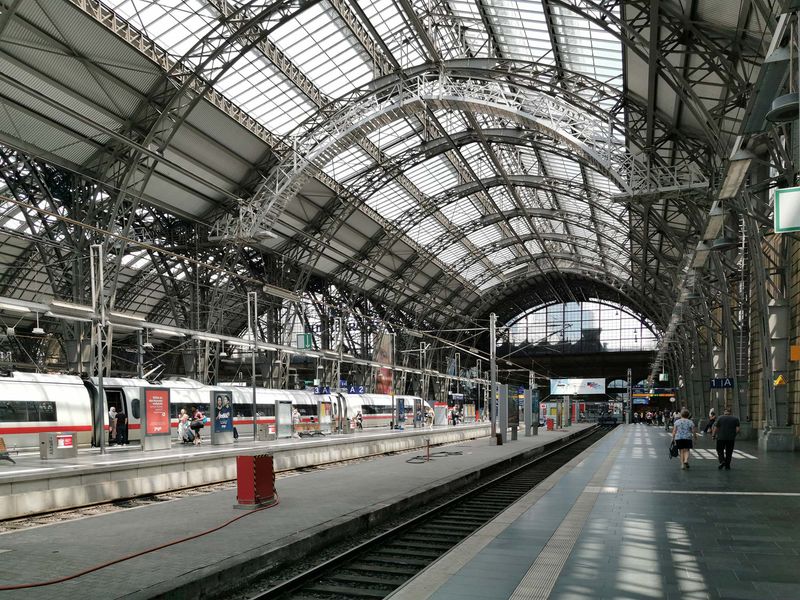
Frankfurt Hauptbahnhof is a busy transit hub, known for its utilitarian design and efficient services. While it lacks the grandeur of other stations, it remains a crucial part of Germany’s rail network.
Inside, the bustling atmosphere caters to the needs of countless travelers, ensuring seamless connections. Its central location makes it a convenient stop for those exploring Frankfurt.
However, it might not be a must-see for architecture enthusiasts.
Skip: Paddington Station, London
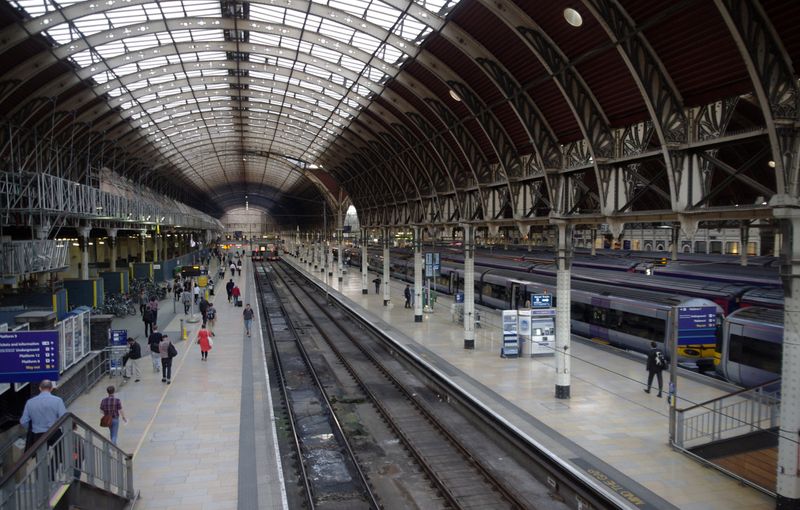
Paddington Station in London, while historic, might not captivate those seeking architectural marvels. Its design is more functional than awe-inspiring, serving as a key transit point for travelers.
The station’s primary charm lies in its historical significance, rather than its visual appeal. It efficiently connects various destinations, including the scenic West Country.
For those interested in railway history, it holds a special place, but it might not be a highlight for others.

